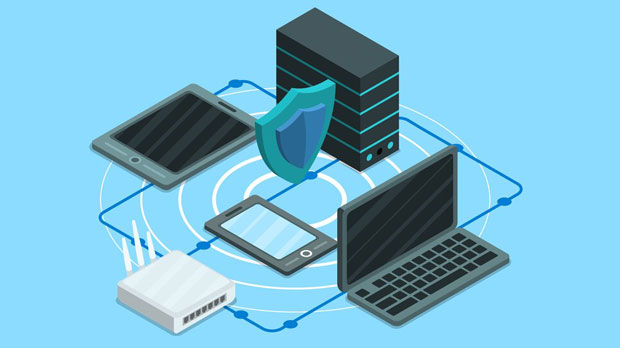Managing a large number of IPs from services like PYPROXY residential proxy can be a daunting task, especially when scaling up for business or personal needs. Effective management is not only crucial for maintaining a steady and efficient workflow, but it also ensures that you are leveraging proxies optimally for different online tasks. In this article, we will break down practical techniques for bulk managing Py proxy residential Proxy Service IPs, with a focus on best practices, tools, and strategies to streamline this process and get the most out of your proxy usage. 1. Understanding the Basics of PyProxy Residential Proxy ServiceBefore diving into the specifics of bulk management, it is essential to understand what a residential proxy is and how PyProxy Residential Proxy Service fits into the larger landscape of proxy solutions. residential proxies assign you IPs that belong to real residential devices, meaning these IP addresses are seen as legitimate by websites, reducing the risk of getting blocked.Residential proxies are commonly used for tasks like web scraping, market research, social media automation, and accessing geo-restricted content. Unlike datacenter proxies, residential proxies are far less likely to be detected as proxies, making them a preferred choice for various high-traffic, high-security applications.2. Why Bulk Management is CrucialAs the demand for proxies grows, managing them in bulk becomes necessary. Whether you’re using them for digital marketing, SEO tasks, or data collection, managing multiple IPs efficiently can save time and resources. When managing proxies in bulk, you need to ensure you’re getting the most from your proxy pool. Disorganized management often leads to missed opportunities, inefficient usage, and ultimately wasted resources.Effective bulk management strategies can optimize your IP rotation process, reduce latency, and minimize the chances of encountering IP bans or blocks. For businesses, this ensures that proxy costs don’t spiral out of control and that every IP is effectively utilized.3. Organizing Your Proxy PoolOne of the first steps in managing proxies in bulk is organizing your proxy pool. For large-scale users, this can involve segmenting proxies into different categories based on geographical locations, types of IPs (e.g., IPv4 vs. IPv6), and intended usage. Here are a few strategies to optimize organization:- Geolocation Segmentation: Group proxies based on regions or countries if you’re targeting specific geographical locations. This allows you to assign the right proxies to tasks requiring certain locations.- Usage Segmentation: If you use different proxies for specific tasks (e.g., data scraping, social media engagement), divide your proxies accordingly. This helps in preventing overuse of the same IPs for conflicting tasks, which could trigger warnings or blocks.- IP Type Segmentation: Group your proxies by IP type, as some tasks may require specific types of IPs (e.g., IPv4 for certain services). Maintaining such a structure ensures that you’re using the most appropriate proxies for each job.4. Automating IP Rotation and ManagementManually switching between proxies can be a time-consuming process, particularly when dealing with hundreds or thousands of IPs. To streamline proxy rotation, consider using automated tools or scripts. Here are some methods for efficient automation:- Proxy Rotation Scripts: Create or use existing scripts that automatically rotate proxies for each request. These scripts can integrate with your existing systems to manage the rotation without manual intervention.- Proxy Management Platforms: Invest in a third-party proxy management platform that offers built-in proxy rotation and management tools. These platforms often provide user-friendly dashboards that track the health and usage of each proxy in real time.- IP Rotation Strategies: Depending on the task, rotate proxies at set intervals or after every few requests to avoid hitting rate limits or facing IP blocks. Automated systems can be programmed to handle these rotations seamlessly.5. Monitoring Proxy Health and PerformanceMaintaining the quality of your proxy pool is just as important as rotating the IPs. Without regular monitoring, proxies can become slow, unreliable, or blocked. Monitoring tools can alert you to any issues, enabling you to address them proactively.- Real-Time Monitoring Tools: Use software that can track the health of each IP address in your pool. These tools can alert you to issues like downtime, slow performance, or blocks, allowing you to quickly rotate problematic IPs.- Error Reporting: Set up automated error reports to track failed requests and other performance issues. By analyzing these reports, you can spot patterns in proxy failures, helping you make data-driven decisions about when and how to replace proxies.- Proxy Usage Analytics: Keep track of the number of successful requests made by each IP. High success rates indicate that the IP is functioning well, while an increasing number of failures may suggest the need for a proxy refresh or replacement.6. Implementing Load Balancing for Optimal PerformanceWhen using proxies for large-scale operations, load balancing is an essential technique to distribute traffic evenly across your proxy pool. This ensures that no single proxy is overwhelmed with requests, which could lead to performance degradation or bans. Effective load balancing can optimize the efficiency of your proxies and reduce the chances of hitting rate limits or CAPTCHAs.- Load Balancing Algorithms: Employ algorithms such as round-robin, least connections, or weighted distribution to balance the load across your proxy pool. These algorithms ensure an even spread of traffic and help maintain consistent performance.- Traffic Prioritization: For critical tasks that require faster response times, you can prioritize high-performance proxies or those with lower failure rates to handle the load.7. Security ConsiderationsWith large-scale proxy usage, ensuring security is paramount. Proxies, particularly residential ones, are often used for high-stakes activities, including data scraping, competitive research, and even circumventing geographic restrictions. To avoid being detected or hacked, follow these security best practices:- Encryption: Use encrypted proxy connections to prevent data interception. Always prioritize HTTPS or secure proxy protocols to safeguard sensitive information.- IP Authentication: Some proxy services allow you to configure IP whitelisting or authentication processes. This adds an additional layer of security to your proxy usage, reducing the chances of malicious exploitation.- Regular Proxy Pool Updates: Keep your proxy pool updated by rotating or refreshing expired or weak IPs. An updated pool is less likely to be flagged as suspicious by websites.8. Best Practices for Optimizing CostsManaging proxies in bulk can quickly become expensive if not done efficiently. To optimize costs, consider the following strategies:- Predictive Usage: Estimate the number of proxies you need based on the volume of traffic or tasks. Over-purchasing can lead to unnecessary expenses.- Contract Negotiation: Work closely with your proxy provider to negotiate bulk discounts or tailored plans that match your specific requirements. Bulk purchasing can often lead to cost savings.- Resource Allocation: Prioritize high-value tasks for premium proxies while reserving lower-cost proxies for less critical tasks.Bulk managing PyProxy Residential Proxy Service IPs requires a well-structured approach, including organized proxy pools, automated management, real-time monitoring, and security practices. By implementing these techniques, you can streamline operations, improve the efficiency of your proxy usage, and reduce costs. The key to successful proxy management lies in careful planning, monitoring, and adapting to changing needs, ensuring that you always have access to a reliable, high-performing proxy pool.
Sep 01, 2025


































































